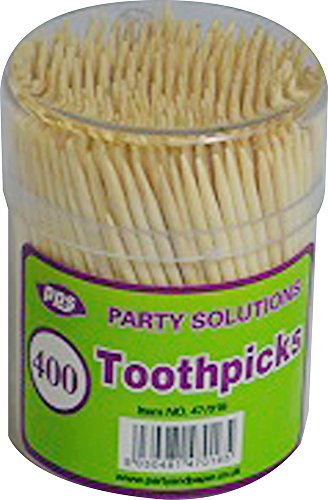Toothpicks or Dental Floss: Which is the Better Option for Oral Health?
Keeping good oral health is crucial for overall wellness, and maintaining proper dental hygiene plays a significant role in achieving this. Regular brushing and flossing are known to remove food particles and plaque from between the teeth and along the gum line. While dental floss has long been considered the gold standard for interdental cleaning, toothpicks have become an alternative tool for many. Let’s explore how toothpicks compare to dental floss in terms of effectiveness, convenience, accessibility, and potential risks.
The Effectiveness of Toothpicks vs. Dental Floss
Dental floss is designed specifically for interdental cleaning. It is a thin, waxed string that reaches tight spaces and removes plaque and debris effectively. The technique involves gently sliding the floss between the teeth and along the gum line. This full-contact cleaning method ensures all surfaces are thoroughly cleaned, reducing the risk of cavities and gum disease.
Toothpicks, on the other hand, primarily target larger food particles stuck between teeth. While they can dislodge visible debris, toothpicks are less effective in removing plaque and reaching deeper areas. If used as the only method of interdental cleaning, toothpicks may not provide the same level of oral hygiene benefits as dental floss.
Convenience and Accessibility
When it comes to convenience and accessibility, toothpicks have an edge. Toothpicks are readily available in most households and restaurants, making them a convenient option for quick clean-ups after meals. They are also easy to carry while traveling or on-the-go.
On the other hand, dental floss may require a bit more preparation and planning. While portable floss picks and pre-threaded floss options have made it more convenient, the need for a clean, hygienic environment to floss effectively can sometimes pose a challenge. Additionally, if not carried regularly, one may find themselves without floss when needed the most.
Potential Risks of Toothpicks and Flossing
Both toothpicks and dental floss have potential risks associated with their use.
Using toothpicks aggressively or improperly can lead to gum irritation, bleeding, and gum damage. Vigorous use can also cause tooth enamel erosion, particularly if used to clean between tight spaces. The pointed ends of toothpicks can also accidentally injure the gum tissue or cause gum recession.
Dental floss, when used incorrectly, can cause similar problems. Applying excessive force or using a sawing motion can harm the gums and cause bleeding. Some people also find flossing uncomfortable, especially if they have sensitive gums or teeth.
Toothpicks and Dental Floss – Complementary Tools
Instead of viewing toothpicks and dental floss as competing options, it is more appropriate to consider them as complementary tools in oral hygiene. Dental floss should remain the primary choice for interdental cleaning due to its superior effectiveness in removing plaque and reaching tight spaces.
However, toothpicks can serve as a convenient and immediate solution for removing visible food particles stuck between teeth after meals. They can be particularly useful in situations where flossing is not feasible or available, such as when dining out.
To maintain optimal oral health, it is recommended to consult with a dentist or dental hygienist to determine the best interdental cleaning routine for individual needs. Incorporating both dental floss and toothpicks, when appropriate, can go a long way in promoting healthy gums and preventing dental issues.






